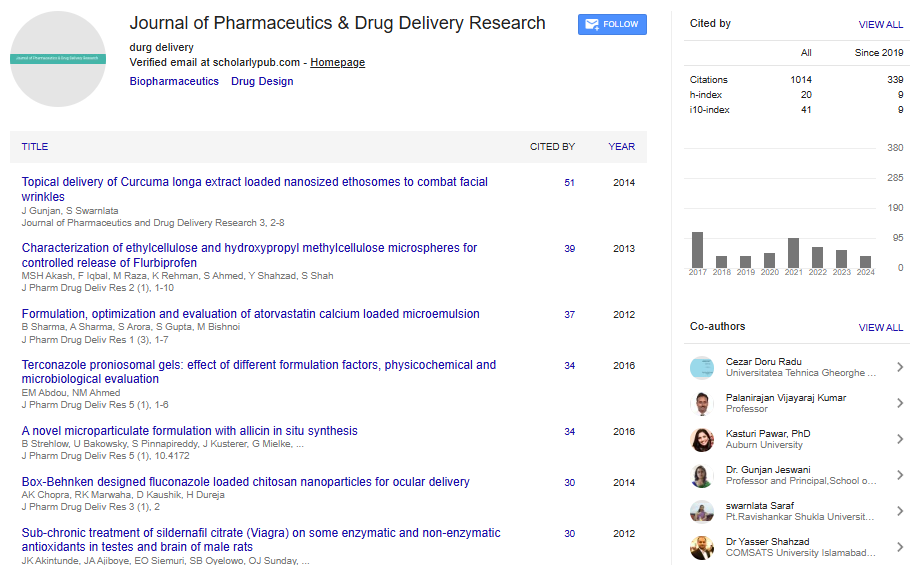Layer-by-layer assembly of gelatin on nanofibrils for 3D cultivation of cells
Ji Un Shin, Young Ju Son, Wei Mao, Sol Lee and Hyuk Sang Yoo
Kangwon National University, Republic of Korea
: J Pharm Drug Deliv Res
Abstract
Electrospun nanofibrous meshes are excellent tissue scaffolds for cell cultivation due to its extracellular matrix-mimicking structures. Their high porosity improves air, nutrient and waste exchanges, whereas the nanoscale pore size inhibits cell penetration into the matrix, which cannot simulate 3D microenvironment of in vivo condition. In this study, short PCL fragments (nanofibrils) were obtained by hydrolysis of electrospun nanofibers in a strong alkaline condition in order to improve cell-to-matrix contact and to expose abundant hydroxyl groups on the surface of the nanofibril as well. Gelatin type A and B, which have opposite charges at pH 6.0, were coated layer-by-layer on the PCL Nanofibrils (PCL NF) to create cell-favorable 3D matrix in terms of cell adhesion and proliferation. Total 5 layers of gelatins were deposited on the PCL NF and the amount of gelatin coated on the PCL NF was quantified by BCA assay. In order to evaluate stability of gelatin layer deposited on the PCL NF, gelatin release was monitored for 7 days by incubating the PCL NF/Gel in PBS (pH 7.4). NIH3T3 cells were seeded on the PCL NF/Gel (5×105 cells/1 mg of the NF), cultured for 10 days and cell viability was evaluated by WST-1 assay. Considerable amount of gelatins was deposited in the PCL NF/Gel 100 when the PCL NF was layered with the high concentration of gelatin solution. We speculate that the higher concentration of the gelatin solution is used, the stronger electrostatic interaction between gelatin A and B layers on the NF occurs based on severe non-specific adsorption of gelatins to the NF. Although the PCL NF/Gel 100 released large amount of gelatin due to simple diffusion of weakly bound gelatins by non-specific adsorption, the release portion is negligible (12.5%), which suggests that most of gelatins stay stable on the surface of PCL NF. The PCL NF/Gel showed better cell adhesion and higher proliferation efficiency. However, at day 10, the cell viabilities significantly decreased in all groups because aggressive cell growth induced high confluency in the PCL NF/Gel and consequent cell death.
Biography
Ji Un Shin has received her BS degree from Kangwon National University, Republic of Korea in 2017. She is presently focusing in the fields of biomedical materials in her Master’s course in the Graduate School of Kangwon National University, Republic of Korea. She has great interests in tissue engineering and regeneration, including using nanofibrils for cell cultivation and hydrogel for 3D printing and wound healing.
Email: jeawun@kangwon.ac.kr
 Spanish
Spanish  Chinese
Chinese  Russian
Russian  German
German  French
French  Japanese
Japanese  Portuguese
Portuguese  Hindi
Hindi 
